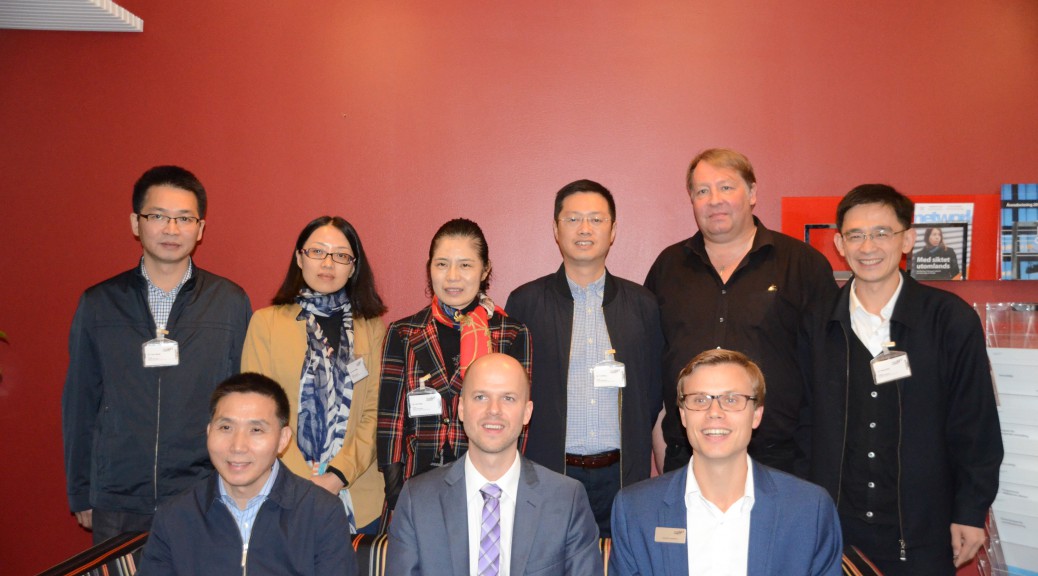ANKARA, Sept. 5 (Xinhua ) — The Chinese economy has entered a “new normal” status and the growth rate of economy is predicted to be around 7 percent in the coming 4 to 5 years, said Chinese Finance Minister Lou Jiwei here on Saturday.
Lou said it in a written statement after the 2-day G20 Finance Ministers and Central Bank Governors Meeting in Ankara Turkey.
Zhou Xiaochuan, People’s Bank of China governor pointed out in the joint statement that there is no foundation that RMB will keep devaluing for a long term.
Zhou Xiaochuan stated that the bubble in Chinese stock market keep increasing before June 2015. The Shanghai Composite Index has mounted up 70 percent from March to June.
Risks as Investors leverage rapid rise occur during this period of time. China has implemented the correction phase of stock market for three times among which the third time in August has some global impacts.
China has been taking measures to prevent its economy from systematic risk including the PBOC providing liquidity to the market through multiple channels.
The measures taken by Chinese government has prevented the stock market from decline in precipice way and the occurrence of systematic risk.
According to the statement, since the August correction in stock market, the Investors leverage in Stock market has been going down significantly and the real economy has not been impacted.
The reform of the middle price quotation of RMB exchange rate mechanism on August 11 is an important step to the marketing reform of RMB rate.
RMB was devalued for a certain degree after the reform, but the RMB was over valued for reasons like the value-up of U.S. dollar ,the generally value depreciate of Currency in emerging market economies.
“But there is no substantial transformation in the real economy of China and large surplus still remains in the foreign trade of China, so there is no foundation that RMB will keep devaluing for a long term,” Governor Zhou strengthened in the Statement.
“The status of Chinese economy is till in predication. The Chinese Economy has entered a “new normal” status and the growth rate of economy is predicted to be around 7 percent in the coming 4 to 5 years” Chinese Finance Minister of Lou Jiewei said in the joint statement.
It is stated that there are mainly two reasons that the growth rate of China will enter the 7 percent period.
Firstly, the rapid growth rate which keeps 9-10 percent in the past and highly depends on the stimulation of policy is not sustainable, and is over the potential growth rate of China which lead to over capacity and mass increase of inventory. It will take years to consume these over capacity and inventory.
The next 5 years will be a painful period for the reform of Chinese economy, and the main goals need to be achieved by 2020. China’s economy will be mainly driven by consumption rather than investment and foreign trade during the reforming period, and this will not be an easy job to accomplish.
Secondly, China’s economic cycle is different with the developed countries. Developed countries generally initiated the process of deleveraging after the global crisis, however, China initiated its leveraging process between 2009 and 2010 and achieved the 10 percent in growth rate.
The contribution rate to growth of global economy was as high as 50 percent above during that time. China now is initiating its process of deleveraging and the growth rate will down to 7 percent but still making 30 percent contribution rate to growth of global economy.
Lou stressed in the statement that there are some positive changes in Chinese economy despite the lower of growth rate, including the contribution rate to growth of consumption comes higher than that of investment, the proportion of service in GDP over passed industry, the proportion of trade surplus in GDP has been decreasing, 7 million new jobs was created in the first half year, the quality of economic growth keeps rising etc.
China will continue to implement a proactive fiscal policy and the increasing rate of central government spending is predicted to be 10 percent, which is higher than the 7 percent budget.
China is taking measures to plug fiscal gap to maintain moderate economic growth and support the structural reform, the statement added.
“The Chinese government will not pay particular attention to a seasonal short term economic fluctuation, and will keep the stability of macroeconomic policies,” Lou pointed out in the statement.
China has achieved a 7 percent growth despite the decreasing of demographic dividend and falling on rate of capital return.
The huge potential of Chinese economy lies in reform and China is unswervingly promote reform and opening up in accordance with the established plan.
“G20 financial ministers and central bank governors have talked about the economy problems in China and we are not pessimistic about China keeping the 7 percent growth rate in the future,’ Deputy Prime Minister of Turkey Cevdet Yilmaz said in the press conference Saturday in Ankara. Enditem
 中国驻瑞典大使陈育明在接受本网记者采访时说,“纪念抗战胜利和世界反法西斯70周年的活动非常有意义。我们使馆梦想合唱团参加侨界的这次演出是为了纪念抗战70周年,用我们自己微薄的力量为抗战胜利贡献一点力量,最主要的是为了铭记历史,永存和平,它的政治意义非常重大,所以能参加这次活动,我们感到非常高兴”。
中国驻瑞典大使陈育明在接受本网记者采访时说,“纪念抗战胜利和世界反法西斯70周年的活动非常有意义。我们使馆梦想合唱团参加侨界的这次演出是为了纪念抗战70周年,用我们自己微薄的力量为抗战胜利贡献一点力量,最主要的是为了铭记历史,永存和平,它的政治意义非常重大,所以能参加这次活动,我们感到非常高兴”。 瑞典华人联合会名誉会长王吉生在接受本网记者采访时表示,华联去年就计划在今年搞这个主题的活动。
瑞典华人联合会名誉会长王吉生在接受本网记者采访时表示,华联去年就计划在今年搞这个主题的活动。 “使馆真的给了我一个意外(惊喜),他们演唱的时候,我就在舞台边上,他们的演唱给人一种震撼力,就象一支军队发出的声音一样,那么雄壮有力。他们是一支不穿军装,不配刀枪,从事世界和平的特种部队。这支队伍延续了新中国外交战线60多年来的传统。新中国的第一代大使,就是共和国第一代的将军。他们给中国外交队伍打下了很好的基础。他们的歌声使我们在场的华人都深受鼓舞。领我们唱国歌的时候, 不管大人孩子,都很激动。有他们的参与,有这种互动,让我们感到有一种能量,作为组织者,我觉得收获太大了,太有震撼力了。”
“使馆真的给了我一个意外(惊喜),他们演唱的时候,我就在舞台边上,他们的演唱给人一种震撼力,就象一支军队发出的声音一样,那么雄壮有力。他们是一支不穿军装,不配刀枪,从事世界和平的特种部队。这支队伍延续了新中国外交战线60多年来的传统。新中国的第一代大使,就是共和国第一代的将军。他们给中国外交队伍打下了很好的基础。他们的歌声使我们在场的华人都深受鼓舞。领我们唱国歌的时候, 不管大人孩子,都很激动。有他们的参与,有这种互动,让我们感到有一种能量,作为组织者,我觉得收获太大了,太有震撼力了。” 本次抗战歌会持续90分钟,分三个部分,抗战前期,歌曲有王乃宁独唱的《松花江上》,冯昭旋演唱的《重整河山待后生》,女高音歌唱家邹容美演唱的《黄河怨》,斯德哥尔摩华人合唱团演唱的《到敌人后方去》,李佳演唱的《太阳出来照四方》。
本次抗战歌会持续90分钟,分三个部分,抗战前期,歌曲有王乃宁独唱的《松花江上》,冯昭旋演唱的《重整河山待后生》,女高音歌唱家邹容美演唱的《黄河怨》,斯德哥尔摩华人合唱团演唱的《到敌人后方去》,李佳演唱的《太阳出来照四方》。 俄罗斯协会主席塞格尔女士在接受记者采访时说,“我们来演出是为了我们的中国朋友。我们有很长的交往历史,中国朋友经常参加我们的活动,所以我们今天也愿意为他们来演唱,这次还赶上中国的重要节日(中秋节,国庆节)。我觉得我们应该多多合作,因为它促进团结一致,增进了解和相互理解。今年五月份我们搞了一个大活动,是俄罗斯庆祝反法西斯卫国战争胜利70周年,我们当时邀请了中国协会的朋友。我们需要结交新朋友,我们将举行新的更大的活动,请大家听我们的好消息。
俄罗斯协会主席塞格尔女士在接受记者采访时说,“我们来演出是为了我们的中国朋友。我们有很长的交往历史,中国朋友经常参加我们的活动,所以我们今天也愿意为他们来演唱,这次还赶上中国的重要节日(中秋节,国庆节)。我觉得我们应该多多合作,因为它促进团结一致,增进了解和相互理解。今年五月份我们搞了一个大活动,是俄罗斯庆祝反法西斯卫国战争胜利70周年,我们当时邀请了中国协会的朋友。我们需要结交新朋友,我们将举行新的更大的活动,请大家听我们的好消息。 瑞典华人艺术家协会会长,著名华人女高音歌唱家邹容美在接受记者采访时说,“瑞典华人艺术家协会是华联的一个协会。一个月之前,大家都在庆祝二战胜利70周年,华联说我们要以歌来庆祝胜利,所以就和俄罗斯和塞尔维亚协会一起举办这场国际抗战歌会。由于时间比较紧,波兰和印度协会没有来得及参加。不过,在大使馆的大力支持下,我们的歌会也还是很成功的。”
瑞典华人艺术家协会会长,著名华人女高音歌唱家邹容美在接受记者采访时说,“瑞典华人艺术家协会是华联的一个协会。一个月之前,大家都在庆祝二战胜利70周年,华联说我们要以歌来庆祝胜利,所以就和俄罗斯和塞尔维亚协会一起举办这场国际抗战歌会。由于时间比较紧,波兰和印度协会没有来得及参加。不过,在大使馆的大力支持下,我们的歌会也还是很成功的。”







